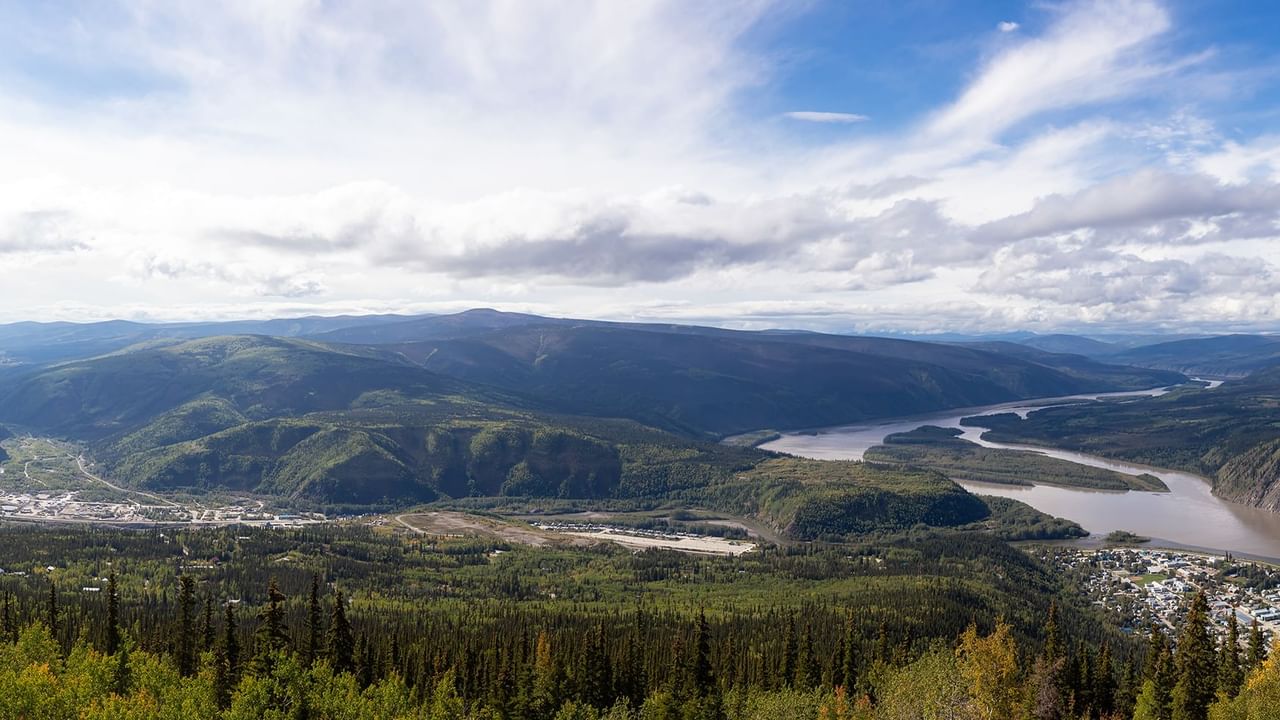Klondike River

Nestled within the pristine wilderness of the Yukon Territory in Canada flows a river that holds a special place in the hearts and minds of people around the world—the Klondike River. Renowned for its role in igniting the Klondike Gold Rush of the late 19th century, this iconic waterway is not only a natural wonder but also a cultural treasure trove. In this article, we delve into the rich tapestry of stories, traditions, and heritage that make the Klondike River culturally important, exploring its significance to indigenous peoples, gold rush pioneers, and contemporary society.
Indigenous Heritage and Connection:
For millennia, the lands surrounding the Klondike River have been inhabited by indigenous peoples who have forged deep connections to the land and its resources. Among these are the Tr’ondëk Hwëch’in and Tlingit First Nations, whose ancestors have called the region home for thousands of years.
The Klondike River holds profound spiritual significance for indigenous communities, serving as a source of sustenance, transportation, and cultural identity. Traditional practices such as fishing, hunting, and berry picking continue to be integral parts of indigenous life along the riverbanks, reflecting a deep-seated reverence for the natural world and its rhythms.
Furthermore, the Klondike River Basin is dotted with archaeological sites, petroglyphs, and cultural landmarks that bear witness to the enduring presence and resilience of indigenous cultures in the Yukon. These sites serve as reminders of the rich heritage and contributions of indigenous peoples to the cultural tapestry of the Klondike region.
Gold Rush Legacy and Historical Heritage:
The Klondike River rose to prominence on the world stage during the Klondike Gold Rush of 1896-1899, when the discovery of gold nuggets in its waters sparked a stampede of fortune-seekers from around the globe. The ensuing gold rush transformed the remote Yukon wilderness into a bustling frontier outpost virtually overnight, leaving behind a legacy of adventure, adversity, and cultural exchange.
The Klondike Gold Rush brought together people from diverse backgrounds and cultures, creating a melting pot of languages, customs, and traditions in the Yukon River. Towns such as Dawson City, situated at the confluence of the Klondike and Yukon rivers, became vibrant hubs of activity, attracting prospectors, entrepreneurs, and adventurers from all walks of life.
Today, the legacy of the Klondike Gold Rush lives on in the form of historic sites, museums, and cultural festivals that celebrate the spirit of exploration and entrepreneurship that defined the era. From preserved mining camps to restored paddle wheelers, these heritage attractions offer visitors a glimpse into the past and a deeper understanding of the Klondike’s cultural importance.
Contemporary Relevance and Environmental Stewardship:
In addition to its historical and indigenous significance, the Klondike River remains culturally important in contemporary society as a symbol of environmental stewardship and conservation. In recent years, there has been a growing recognition of the need to protect and preserve the natural beauty and ecological integrity of the Klondike River Basin for future generations.
Efforts have been made to rehabilitate abandoned mining sites, restore fish habitats, and protect wildlife corridors in the Klondike Basin, reflecting a commitment to sustainable development and responsible resource management. Indigenous communities play a key role in these conservation efforts, drawing on traditional knowledge and stewardship practices to inform land management decisions and protect cultural heritage sites.
Furthermore, the Klondike River continues to inspire artists, writers, and storytellers from around the world, who are drawn to its timeless beauty and historical significance. Through literature, music, and visual arts, these cultural creators pay homage to the Klondike’s legacy and contribute to its ongoing cultural importance in contemporary society.
Conclusion:
In conclusion, the Klondike River is more than just a waterway—it is a cultural lifeline that connects past, present, and future generations. From its deep roots in indigenous traditions to its pivotal role in the Klondike Gold Rush and its contemporary relevance as a symbol of environmental stewardship, the river embodies the spirit of resilience, adaptation, and cultural exchange that defines the human experience in the Yukon. As we continue to explore and celebrate the cultural significance of the Klondike, let us honor its heritage, protect its natural beauty, and ensure that its legacy endures for generations to come.
Know More about the Klondike River.
What are The Religious Places of the Klondike River?
When Did The Klondike River Basin Become a Focus?
Where is The Klondike River Located?
Who Were The Key Historical Figures and Civilizations of The Klondike River?
How to Reach Klondike River?




